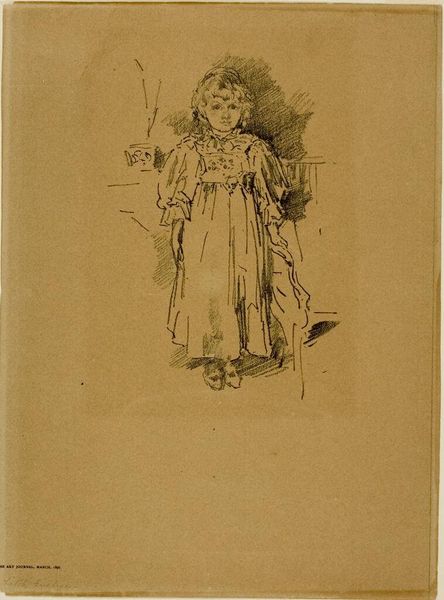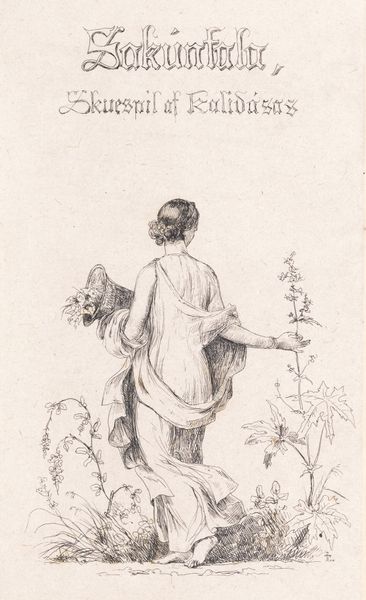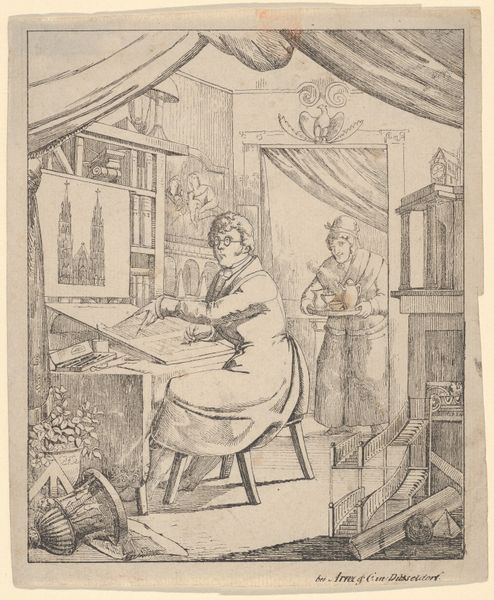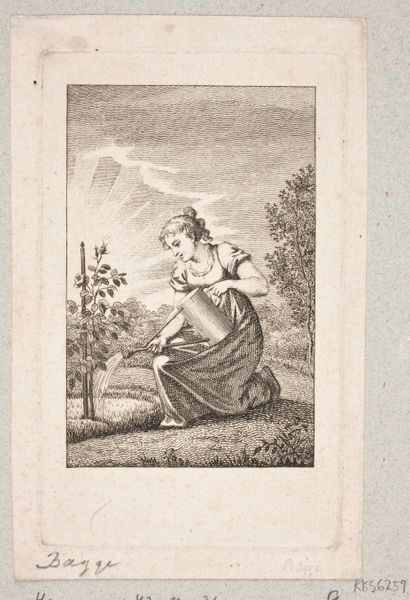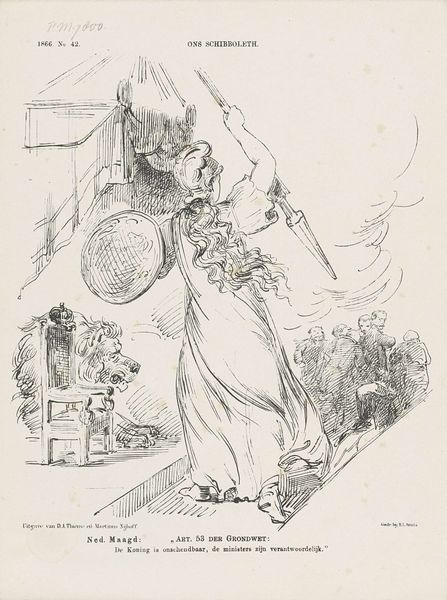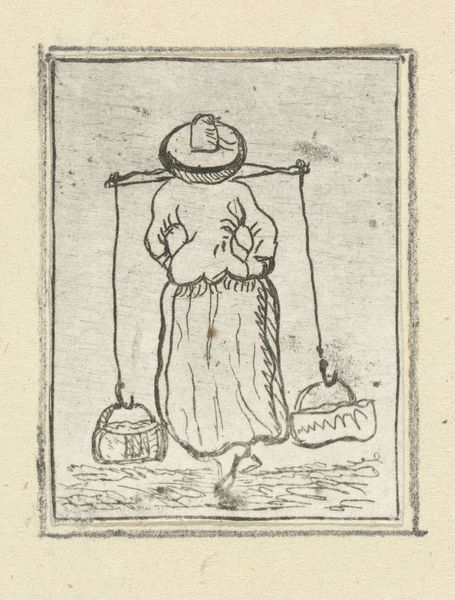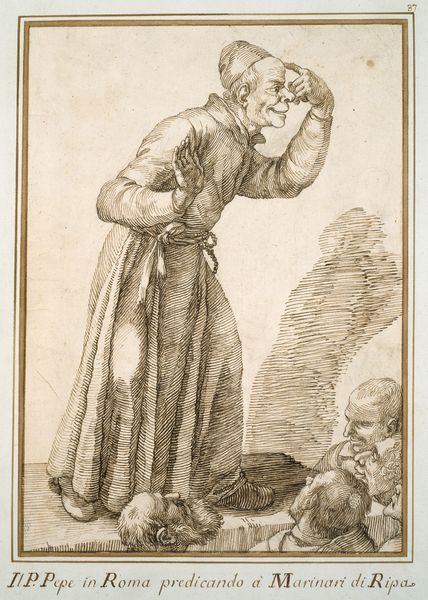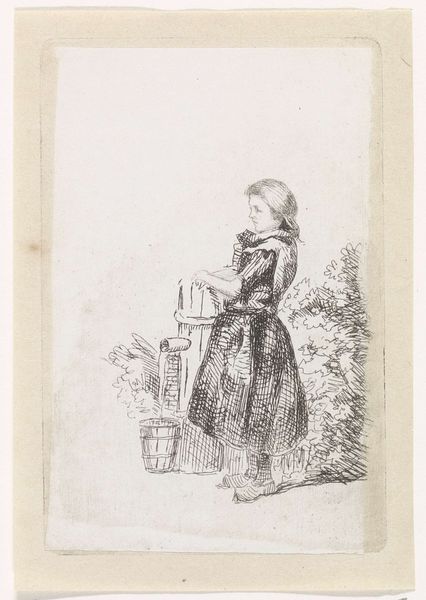
print, paper, ink, woodblock-print
# print
#
charcoal drawing
#
figuration
#
paper
#
ink
#
coloured pencil
#
woodblock-print
#
japonisme
#
watercolor
Copyright: Public Domain: Artvee
Curator: This is "Forbidden Fruit," an etching and colored pencil work on paper created around 1918 by Helen Hyde. Editor: There’s a sense of longing and mischief captured in this piece, with the warm washes creating a nostalgic lens. It gives the impression of an intimate yet transgressive scene unfolding before us. Curator: Transgressive is interesting! The composition shows a girl reaching for what appear to be small oranges or kumquats atop a ladder-like stand, while above these is a pot holding leaves or herbs. What draws me in is Hyde’s control of line. The lines creating the shape and posture of the figure are clearly delineated while she has employed blurred, indefinite lines for the objects. In doing so, the artist asks us to focus on the human subject, and recognize the girl's act of attempting to pilfer food as the focal point. Editor: Absolutely. But considering that it was done during World War I, is it transgressive, or merely an image that reminds us about class dynamics and the desire for basic necessities during times of war? Food shortages disproportionately impacted marginalized communities. Looking through an intersectional lens, does this image portray more than a mere act of childlike innocence, but rather an act of subtle rebellion and survival? What do you make of her turned head, eyes staring upwards and past the fruit, in hopeful contemplation? Curator: Her upward gaze definitely contributes to a certain dynamism within the otherwise simple arrangement. We are invited to recognize her will or agency in seeking food; the artist also highlights her youthful grace by including details like her lightly patterned headscarf, small gesturing hand, and even the whimsical ladder. Hyde seems to use these formal details to convey empathy and thus draw us to the girl's circumstances as she attempts to fulfill her physical desires. Editor: These are important formalist observations, however it seems problematic to admire a depiction of a child's hunger as aesthetic inspiration. I believe the image, even inadvertently, calls upon us to ask ourselves if such desires should be considered ‘forbidden’ at all, for those most in need of resources to survive. Curator: Perhaps, through your insight, we should acknowledge its multifaceted readings as its inherent artistic power. Editor: Yes, let’s conclude that there's complexity and richness layered in "Forbidden Fruit" to reward diverse perspectives.
Comments
No comments
Be the first to comment and join the conversation on the ultimate creative platform.

